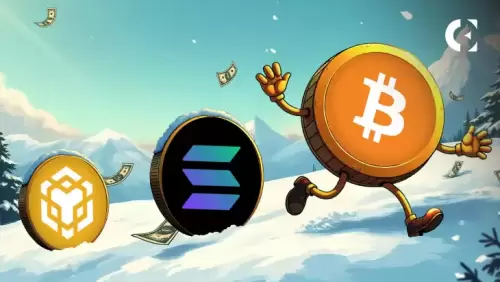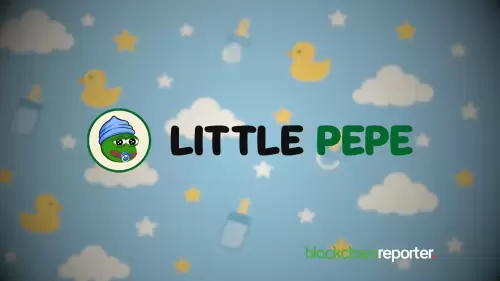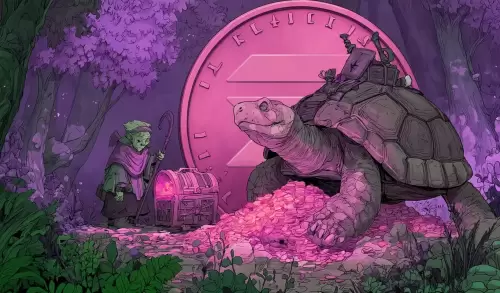 |
|
 |
|
 |
|
 |
|
 |
|
 |
|
 |
|
 |
|
 |
|
 |
|
 |
|
 |
|
 |
|
 |
|
 |
|
Articles d’actualité sur les crypto-monnaies
SPK Token Selloff After Airdrop: A New York Minute Breakdown
Jun 19, 2025 at 05:10 am
SPK token's rocky debut: airdrop selloff, liquidity struggles, and what it means for the future of token launches. Get the inside scoop!

Yo, crypto fam! The SPK token's recent launch has been wilder than a Times Square street performer. A massive airdrop followed by a quick selloff? Classic. Let's break down what happened and what it means for the future of crypto launches.
SPK Token's Crash Landing: A Perfect Storm
Spark's native token, SPK, took a nosedive faster than a Wall Street stock during a scandal. After launching on major exchanges like Binance, KuCoin, and Bybit on June 17, it plummeted over 70% in mere hours. Opening near $0.177, it bottomed out around $0.050 as airdrop recipients cashed out faster than you can say "bear market." Over $120 million in market value? Poof! Gone.
According to Coingecko, over 300 million SPK tokens flooded the market during the first trading session. Binance alone distributed 200 million SPK to users staking BNB. The problem? Too many tokens, not enough buyers. Liquidity couldn't keep up, and the price tanked. It's a tale as old as crypto itself.
A Familiar Tune: Airdrops and the Quick Cash Grab
SPK's story isn't unique. We've seen this play out with tokens like ZORA, APT, and KAITO. A generous airdrop gets everyone hyped, but then the quick-buck artists dump their holdings, leaving long-term believers holding the bag. It raises the question: Are airdrops rewarding genuine engagement, or just incentivizing a pump-and-dump scheme?
BNB Chain's Airdrop Advantage
The surge in activity on BNB Chain is fueled by airdrop campaigns orchestrated by Binance. These programs, like Binance Launchpool and Binance Alpha, encourage users to borrow and use BNB tokens in anticipation of future token distributions. The Spark airdrop specifically triggered a spike in borrowing, with BNB borrowing rates soaring on lending protocols like Aave and Venus.
The Good News (Maybe): Spark's Strong Foundation
Despite the rough start, Spark boasts a solid DeFi ecosystem with nearly $8 billion in total value locked. The token distribution plan allocates 65% for farming, 23% for ecosystem use, and 12% for contributors. Farming hasn't even started yet, so there's still hope for SPK's long-term potential. However, exchanges like Binance and Coinbase have listed the token under cautionary labels, acknowledging the volatility.
Looking Ahead: Rewarding Loyalty, Not Just Airdrop Hoarders
The SPK saga highlights a critical issue: projects need to find better ways to reward long-term engagement, not just passive users looking for a quick flip. Unless things change, we're likely to see more of these airdrop-induced selloffs. Maybe it's time to focus on vesting schedules, staking rewards, or other mechanisms that incentivize holding and active participation.
My Two Satoshis
Honestly, the SPK launch was a mess. But it's a valuable lesson for everyone in the crypto space. Airdrops can be a powerful tool, but they need to be implemented thoughtfully. Otherwise, you're just setting yourself up for a crash.
So, what's next for SPK? Only time will tell. But one thing's for sure: the crypto world is never boring. Keep your eyes peeled, do your research, and don't get caught holding the bag!
Clause de non-responsabilité:info@kdj.com
Les informations fournies ne constituent pas des conseils commerciaux. kdj.com n’assume aucune responsabilité pour les investissements effectués sur la base des informations fournies dans cet article. Les crypto-monnaies sont très volatiles et il est fortement recommandé d’investir avec prudence après une recherche approfondie!
Si vous pensez que le contenu utilisé sur ce site Web porte atteinte à vos droits d’auteur, veuillez nous contacter immédiatement (info@kdj.com) et nous le supprimerons dans les plus brefs délais.
-

-

-

- Solana, BNB, Bitcoin: Décodage du carrefour de la cryptographie
- Jun 19, 2025 at 08:45 pm
- La résilience de Bitcoin contraste avec les luttes d'altcoin. BNB fait face à la résistance, tandis que Solana navigue parallèle à la croissance. Découvrez les idées en train de façonner l'avenir de la cryptographie.
-

-

- Nouvelle obsession de Crypto Trader: Little Pepe vs Shiba Inu - une confiscation de monnaie!
- Jun 19, 2025 at 09:25 pm
- Little Pepe est-il le nouveau roi des pièces MEME? Les commerçants de crypto bourdonnent, certains le déclarant même supérieur à Shiba Inu. Obtenez la caisse de cette balade Wild Crypto!
-

- Solana Memecoin Mania: monter la vague à des sommets de tous les temps?
- Jun 19, 2025 at 08:50 pm
- Les Memecoins basés sur Solana se réchauffent, certains analystes prédisant de nouveaux sommets de tous les temps. Nous plongeons dans les tendances, les idées et l'avenir potentiel de cet espace passionnant.
-

-

-

- PI Network KYC Sync: Une nouvelle fonctionnalité rationalise à l'intégration avant PI2DAY
- Jun 19, 2025 at 08:50 pm
- PI Network introduit une nouvelle fonctionnalité de synchronisation KYC pour aborder les écarts de données, simplifiant l'intégration de l'utilisateur avant PI2Day. Est-ce un changeur de jeu?



























































